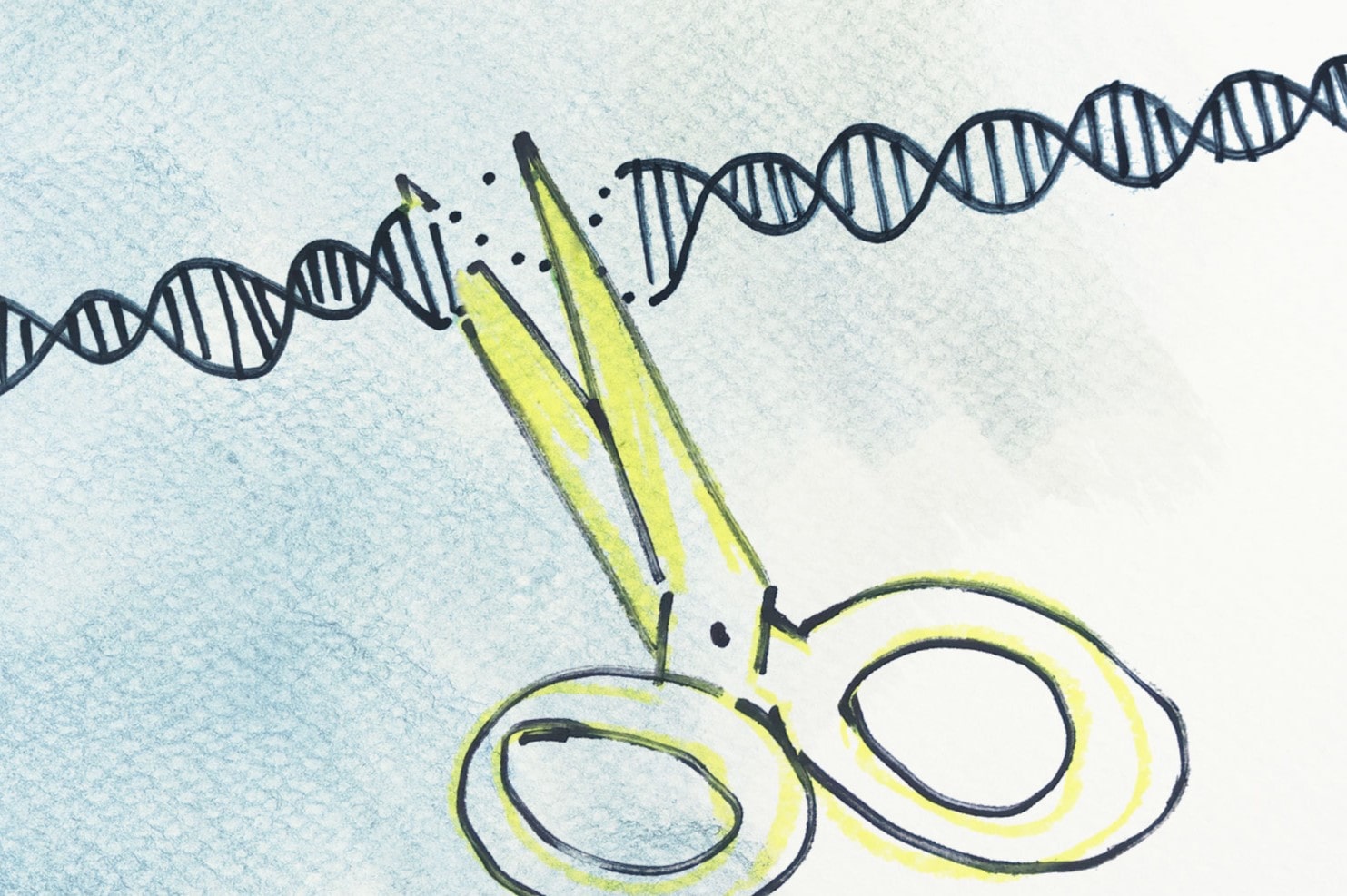
Endonucleases are enzymes that cut DNA strands at specific sites, playing a crucial role in genetic research and biotechnology. These molecular scissors are essential for DNA repair, replication, and recombination. Endonucleases recognize specific sequences within DNA, making precise cuts that can be used for gene editing, cloning, and various molecular biology techniques. Understanding these enzymes helps scientists manipulate genetic material, leading to advancements in medicine, agriculture, and forensic science. From CRISPR technology to restriction enzymes, endonucleases have revolutionized how we study and modify genetic information. Dive into these 50 fascinating facts about endonucleases to learn more about their functions, types, and applications in modern science.
Key Takeaways:
- Endonucleases are like molecular scissors that cut DNA at specific sites, helping in DNA repair, genetic engineering, and even fighting cancer. They have fun names and are used in science fiction stories!
- Endonucleases have many cool applications, from creating genetically modified organisms to helping conserve endangered species. Researchers are working on making them more precise and exploring their potential in regenerative medicine.
What is Endonuclease?
Endonucleases are enzymes that cut DNA strands at specific sites. They play a crucial role in various biological processes and biotechnological applications. Here are some fascinating facts about these molecular scissors.
- Endonucleases can recognize specific DNA sequences and make precise cuts.
- They are essential for DNA repair mechanisms in cells.
- These enzymes are used in genetic engineering to insert or remove genes.
- Restriction endonucleases are a type of endonuclease that cut DNA at specific sequences.
- The discovery of restriction endonucleases revolutionized molecular biology.
Types of Endonucleases
Different types of endonucleases have unique functions and characteristics. Understanding these types helps in various scientific and medical applications.
- Type I endonucleases cut DNA at random sites far from their recognition sequences.
- Type II endonucleases cut DNA within or near their recognition sequences.
- Type III endonucleases cut DNA a short distance away from their recognition sequences.
- Type IV endonucleases target modified DNA, such as methylated DNA.
- CRISPR-associated endonucleases, like Cas9, are used for genome editing.
Applications in Biotechnology
Endonucleases have numerous applications in biotechnology, making them indispensable tools in research and industry.
- They are used in cloning to insert genes into plasmids.
- Endonucleases help in creating genetically modified organisms (GMOs).
- These enzymes are crucial for DNA sequencing techniques.
- They enable the development of gene therapies for genetic disorders.
- Endonucleases are used in forensic science for DNA fingerprinting.
Role in DNA Repair
Endonucleases play a vital role in maintaining the integrity of genetic information by participating in DNA repair processes.
- They help repair double-strand breaks in DNA.
- Endonucleases are involved in the nucleotide excision repair pathway.
- They assist in the base excision repair pathway.
- These enzymes help correct mismatched DNA pairs.
- Endonucleases are crucial for the repair of DNA crosslinks.
Historical Milestones
The discovery and development of endonucleases have marked significant milestones in the field of molecular biology.
- The first restriction endonuclease was discovered in 1970.
- Werner Arber, Hamilton Smith, and Daniel Nathans received the Nobel Prize in 1978 for their work on restriction endonucleases.
- The development of recombinant DNA technology in the 1970s relied heavily on endonucleases.
- The Human Genome Project utilized endonucleases for mapping and sequencing DNA.
- The CRISPR-Cas9 system, discovered in 2012, has revolutionized genome editing.
Endonucleases in Medicine
Endonucleases have promising applications in medicine, particularly in the treatment of genetic diseases and cancer.
- They are used in gene therapy to correct genetic mutations.
- Endonucleases can target and destroy cancer cells by cutting their DNA.
- These enzymes are being explored for use in antiviral therapies.
- Endonucleases help in the development of personalized medicine.
- They are used in diagnostic tests for genetic disorders.
Challenges and Future Directions
Despite their many applications, endonucleases also present challenges that researchers are working to overcome.
- Off-target effects can cause unintended DNA cuts.
- Delivery of endonucleases to specific cells remains a challenge.
- Immune responses to endonucleases can limit their effectiveness.
- Researchers are developing more precise endonucleases to reduce off-target effects.
- Advances in nanotechnology may improve the delivery of endonucleases.
Fun Facts About Endonucleases
Endonucleases are not just serious scientific tools; they also have some fun and interesting aspects.
- Some endonucleases are named after the bacteria from which they were isolated.
- The EcoRI endonuclease is named after Escherichia coli.
- Endonucleases can be engineered to recognize new DNA sequences.
- They are often used in science fiction stories about genetic engineering.
- Endonucleases have been featured in popular science exhibits and museums.
Environmental Impact
Endonucleases also have applications in environmental science, contributing to sustainability and conservation efforts.
- They are used in bioremediation to break down pollutants.
- Endonucleases help in the study of microbial communities in the environment.
- These enzymes are used to monitor biodiversity through DNA analysis.
- Endonucleases assist in the development of biofuels by modifying microorganisms.
- They are used in the conservation of endangered species through genetic studies.
Future Prospects
The future of endonucleases is bright, with ongoing research promising new and exciting developments.
- Researchers are exploring the use of endonucleases in synthetic biology.
- Advances in CRISPR technology continue to expand the potential of endonucleases.
- Endonucleases may play a role in the development of new antibiotics.
- They are being studied for their potential in regenerative medicine.
- The continued study of endonucleases will likely lead to breakthroughs in many scientific fields.
The Final Word on Endonucleases
Endonucleases play a crucial role in genetic research and biotechnology. These enzymes cut DNA at specific sites, making them essential for gene editing, cloning, and DNA sequencing. Without endonucleases, advancements in medical research, agriculture, and forensic science would be much slower. Understanding how these enzymes work helps scientists develop new treatments for genetic disorders and improve crop yields.
In short, endonucleases are indispensable tools in modern science. Their ability to precisely cut DNA opens up endless possibilities for innovation and discovery. Whether you're a student, researcher, or just curious about genetics, knowing about endonucleases gives you a glimpse into the fascinating world of molecular biology. So next time you hear about CRISPR or gene therapy, remember the tiny enzymes making it all possible.
Frequently Asked Questions
Was this page helpful?
Our commitment to delivering trustworthy and engaging content is at the heart of what we do. Each fact on our site is contributed by real users like you, bringing a wealth of diverse insights and information. To ensure the highest standards of accuracy and reliability, our dedicated editors meticulously review each submission. This process guarantees that the facts we share are not only fascinating but also credible. Trust in our commitment to quality and authenticity as you explore and learn with us.


